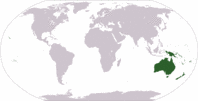Hydriastele longispatha
| Hydriastele (high-dree-Ah-STEL-eh) longispatha (lohn-jih-SPAITH-ah) | |||||||
|---|---|---|---|---|---|---|---|
 Heath forest, Mt. Jaya, West Papua, Indonesia. Photo by Dr. William J. Baker, Royal Botanic Gardens, Kew/Palmweb. | |||||||
| Scientific Classification | |||||||
| |||||||
| Synonyms | |||||||
|
| |||||||
| Native Continent | |||||||
|
| |||||||
| Morphology | |||||||
| |||||||
| Culture | |||||||
|
| |||||||
| Survivability index | |||||||
|
| |||||||
| Common names | |||||||
|
| |||||||
Contents
Habitat and Distribution
Widespread in mountainous regions of Papua New Guinea, between (200+) 600 and 1,450 m elevation, often in small, isolated populations on steep ridges.Description
Tall slender palms to 24 m or more in height; stem l0-25 cm in diameter; leaves 16-19 in a crown, strongly arcuate, sheath 95-120 cm long, petiole 12-20 cm long, blade about 240-250 cm long, petiole and rachis thickly brown-lepidote above and below; pinnae erect: but drooping at the tips, 50 69 on each side of the rachis, 65-95 cm long, 2.I-4 cm wide, deeply bifid at the apex, with the upper margin much prolonged, upper surface minutely and sparsely dotted, the lower surface the same and with several to many large, pale ramenta on the midrib (lacking in Mt. Suckling population). Inflorescence 60-90 cm long, branching to 2 orders, axes and flowers white, glabrous; rachillae about 50-60 cm long, l-4 mm wide, bearing 80-185 triads. Staminate flowers l0-18 mm long, with 9-24 stamens. PistilIate flowers 2-3.5 mm high, with 2-3 staminodes; fruit bright red, subglobose, 7-13 X 4-9 mm when dry; endosperm homogeneous. (Frederick B. Essig 1973) Editing by edric.
Having carefully examined the cited specimens in comparison with the type descriptions for Hydriastele longispatha, Hydriastele crenata, Hydriastele obscura and Hydriastele brossii, I have reached the conclusion that they all representing elements of a single, variable, and widespread species. The examination of the pericarp anatomy of several of the specimens, representing widespread populations, reinforced this conclusion. The specimens examined shared a unique feature in the genus, namely a distinct series of fibrous bundles in the outer pericarp, As far as can be determined, the fruit in this species are all bright red at maturity. Leaves are characteristically strongly arcuate, with pinnae ascending but soft and drooping at the tips. The habitat preference of mountainous terrain for this species contrasts with the lowland habitat of Hydriastele costata. In this regard, however, the locality given for the type collection of Hydriastele longispatha is troublesome and possibly an error. The locality is given vaguely as "the Sepik River, altitude I97 m, November 1910." At 200 m, one is still in lowland alluvial forest, the wrong habitat for this species as currently understood. It is recorded, however (Flora Malesiana l: 478. 1950), that during November (Nov. 2-13) Schultze made a side trip to the mountains south of the Sepik, ascending to Peripetus Peak (alt. I,492 m), which I have not located, but which apparently is in the vicinity of the Leonard Schultze River, 1Q-15 miles east of the Frieda River. This, then would be very close to where I collected the species and observed it in great abundance. It is possible and likely that the type of the species was collected on this side trip at an altitude considerably above 197 m. The populations in the Sepik Basin are homogeneous with respect to stamen number (9), but those in the southern part of the range are more variable. Hydriastele brassii has 20-24 stamens, which at first prompted me to maintain it as a separate species. Other populations bridge the gap, however. The specimen from the Morobe Province has 12 stamens, and the specimens from the Mt. Suckling area have 18. With the addition of the anatomical data from the pericarp, it became evident that Gulubia brassii could no longer be maintained. (Frederick B. Essig 1973)
H. longispatha can be characterized by the presence of a distinct series of fibrous bundles located outside of the tanniniferous zone and apparently not connected with the fibrovascular bundles to the inside of the tanniniferous zone. (Frederick B. Essig 1973)
Culture
Cold Hardiness Zone: 10b
Comments and Curiosities
- IMAGE GALLERY
External Links
- Glossary of Palm Terms
- MODERN BOTANICAL LATIN
- "Just To Be Clear"
- https://www.palms.org/principes/1982/v26n4p159-173.pdf
References
Phonetic spelling of Latin names by edric.
Special thanks to Geoff Stein, (Palmbob) for his hundreds of photos.
Special thanks to Palmweb.org, Dr. John Dransfield, Dr. Bill Baker & team, for their volumes of information and photos.
Glossary of Palm Terms; Based on the glossary in Dransfield, J., N.W. Uhl, C.B. Asmussen-Lange, W.J. Baker, M.M. Harley & C.E. Lewis. 2008. Genera Palmarum - Evolution and Classification of the Palms. Royal Botanic Gardens, Kew. All images copyright of the artists and photographers (see images for credits).
Frederick B. Essig, University of South Florida, Tampa Florida.
Many Special Thanks to Ed Vaile for his long hours of tireless editing and numerous contributions.














